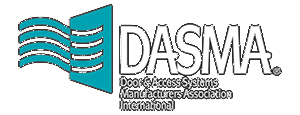Assembling Doors
© 2005 Door & Access Systems
Publish Date: Summer 2005
Author: Joe Hetzel
Page 68
ASK JOE HETZEL
Assembling Doors
Q: “Our company recently began to assemble our own garage doors by buying sections and components from various suppliers. However, I am concerned about technical and safety issues. From your perspective, what are some key issues to consider?”
A: You must first realize that you are now considered a “manufacturer” who is responsible for the final installed assembly of components. The Consumer Product Safety Commission (CPSC) made that clear in its previous interactions with the industry, and case law also supports that position.
Your responsibility does indeed extend to the technical and safety aspects of your doors. As a manufacturer, you will be expected to (1) produce detailed drawings, (2) produce written installation instructions, (3) know and follow applicable industry standards, (4) be aware of common industry practices and general guidelines, (5) be aware of CPSC concerns, (6) know the local codes in the areas where you do business, (7) back up the performance of your doors with proper testing and engineering, and (8) provide a means by which you can assure consistent high quality of complete, installed assemblies.
It sounds like a tall order, but these are common everyday requirements that DASMA garage door manufacturers accept and apply. DASMA has published many free garage door standards and Technical Data Sheets to help manufacturers in these areas. You can find them at www.dasma.com.
Additionally, DASMA and IDA are working together to develop a set of best practices and guidelines for those who assemble sections and components into complete garage door systems. Look for an announcement about this in the near future.
Fire Door Tests
Q: “A local building official told me that the rolling steel fire door I want to install must be fire tested to ASTM E119. The door has been fire tested to UL 10B, but he said that testing to UL 10B is not acceptable. Why not?”
A: The International Building Code (IBC) states that openings (e.g., for rolling fire doors) shall not be limited to 120 sq. ft. if (1) the “opening protective assembly” has been tested to ASTM E119, or if (2) the adjoining fire areas have an automatic sprinkler system. Thus, in your case, your door must be larger than 120 sq. ft., and the adjoining area does not have an automatic sprinkler system.
To find out the difference between ASTM E119 and UL 10B, I contacted Matt Schumann, a UL Fire Protection Division project engineer. He says the two tests have one major difference. ASTM E119 measures the rise in surface temperature for the entire duration of the test. However, UL 10B simply measures the rise only for the first 30 minutes of testing.
He says that the primary purpose for testing to ASTM E119 is to qualify a product (1) to block the spread of flame and (2) to prevent the transfer of heat. However, the primary purpose of testing to UL 10B is to prevent a fire from spreading through an opening in a fire wall.
Rolling steel fire doors are not normally designed to be tested to ASTM E119. Other products on the market, including some glazed materials, are designed for this purpose.
Therefore, a product other than a rolling steel fire door may be needed in the opening, or (according to how the code is currently written) an automatic sprinkler system may be needed. Matt says the current IBC provisions may need revising. DASMA is working with UL and others to investigate this possibility.
